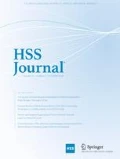To the Editor,
We read the study by Yang et al. entitled “In Vitro Elution Characteristics of Vancomycin in a Composite Calcium Phosphate/Calcium Sulfate Bone Substitute” with great interest [1]. We want to congratulate the authors for their great effort and valuable study. However, we felt that there are few queries which the authors could clarify.
-
1.
The authors reported mixing the biphasic CaP/CaS powder with a radiopaque iohexol solution ahead to mixing the composite with vancomycin, and we are interested to know the reason for this step, especially that when calcium sulfate hemihydrate comes in contact with the iohexol solution, it is ionized and recrystallizes into calcium sulfate dihydrate. We are wondering if the authors took into consideration the potential effect of such addition on the experiment and tried to add a control group.
-
2.
We are interested to know if the authors noticed any changes in the setting time for the composite with the changing in the antibiotic concentration and if so how they managed to incorporate as high as 17.78% of vancomycin into the structure of the CaP/CaS composite. In a study by Guo et al. [3], they reported an increase in the setting time of calcium phosphate cement/calcium sulfate composite with the increase in the liquid/solid ratio (L/S ratio) with a loss of the cement dough formation when the ratio is high. This was also reported by Hu et al. [4] as an increase in the setting time with an increase in the same ratio. Moreover, it was reported that vancomycin is an antibiotic that accelerates the hardening process [2].
-
3.
Finally, how can the authors justify their results in light of the differences in the structure of the individual components of the composite as reported in their discussion section?
References
Yang X, Osagie L, Bostrom MP. In Vitro Elution Characteristics of Vancomycin in a Composite Calcium Phosphate/Calcium Sulfate Bone Substitute. HSS J. 2012; 8(2): 129‐132.
Gitelis S, Brebach GT. The treatment of chronic osteomyelitis with a biodegradable antibiotic-impregnated implant. J Orthop Surg (Hong Kong). 2002; 10(1): 53-60.
Guo H, Wei J, Liu CS. Development of a degradable cement of calcium phosphate and calcium sulfate composite for bone reconstruction. Biomed Mater. 2006; 1(4): 193-197. doi:10.1088/1748-6041/1/4/003.
Hu G, Xiao L, Fu H, Bi D, Ma H, Tong P. Study on injectable and degradable cement of calcium sulphate and calcium phosphate for bone repair. J Mater Sci: Mater Med. 2010; 21(2): 627-634. doi:10.1007/s10856-009-3885-z.
Disclosures
Conflict of Interest:
Ammar Al Khudairy MCh, MRCSI and John P. Phelan, PhD have declared that they have no conflict of interest.
Human/Animal Rights:
This article does not contain any studies with human or animal subjects performed by the any of the authors.
Informed Consent:
N/A
Required Author Forms
Disclosure forms provided by the authors are available with the online version of this article.
Author information
Authors and Affiliations
Corresponding author
Rights and permissions
About this article
Cite this article
Al Khudairy, A., Phelan, J.P. Letter to the Editor. HSS Jrnl 10, 98 (2014). https://doi.org/10.1007/s11420-013-9362-8
Received:
Accepted:
Published:
Issue Date:
DOI: https://doi.org/10.1007/s11420-013-9362-8

